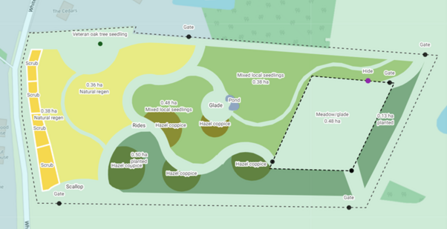Creating a new woodland can be as easy as: tree, eco-guard, cane. However, take a moment. Can your woodland design be tweaked to further support wildlife? Can you make the chosen area work harder and get a better ‘yield’ of wildlife per hectare? This article will highlight some of the important considerations and features which can take a basic tree planting project into a diverse woodland habitat scheme, providing vital habitat and an in turn an abundance of wildlife.
Currently, one of options for landowners is applying for a woodland creation grant (a few types are available). Predominantly, landowners who are planting woodland are doing so on unproductive fields, sites that link up habitat, or areas which will increase the size of an already established woodland. New woodland can provide diversified income, help mitigate climate change, a refreshing change in the work calendar and a feel-good factor from providing habitat for wildlife.

